

Ancient Greek Mythology. The Nine Worlds. Golem. Prague reproduction of Golem In Jewish folklore, a golem (/ˈɡoʊləm/ GOH-ləm; Hebrew: גולם) is an animated anthropomorphic being, created entirely from inanimate matter.
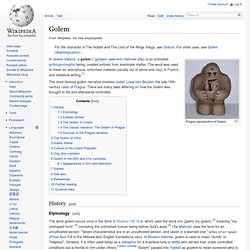
Sagas. Unicorn. Aliens, myths, and ancient tech. 'Atlantis' All mythologies. Norse cosmology. The cosmology of Norse mythology has "nine homeworlds", unified by the world tree Yggdrasill.

Mapping the nine worlds escapes precision because the Poetic Edda often alludes vaguely. The Norse creation myth tells how everything came into existence in the gap between fire and ice, and how the gods shaped the homeworld of humans. Yggdrasill[edit] Norse mythology. Anglo-Saxon mythology and religion. Anglo-Saxon paganism refers to the religious beliefs and practices followed by the Anglo-Saxons between the fifth and eighth centuries AD, during the initial period of Early Medieval England.
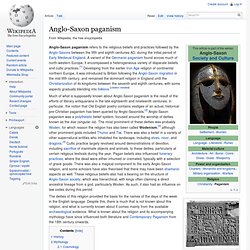
A variant of the Germanic paganism found across much of north-western Europe, it encompassed a heterogeneous variety of disparate beliefs and cultic practices.[1] Developing from the earlier Iron Age religion of continental northern Europe, it was introduced to Britain following the Anglo-Saxon migration in the mid fifth century, and remained the dominant religion in England until the Christianization of its kingdoms between the seventh and eighth centuries, with some aspects gradually blending into folklore. [citation needed] Anglo-Saxon paganism. Germanic mythology and religion. Germanic paganism refers to the theology and religious practices of the Germanic peoples from the Iron Age until their Christianization during the Medieval period.

It has been described as being "a system of interlocking and closely interrelated religious worldviews and practices rather than as one indivisible religion" and as such consisted of "individual worshippers, family traditions and regional cults within a broadly consistent framework".[1] Germanic paganism took various forms in different areas of the Germanic world. Germanic Mythology: Texts, Translations, Scholarship. Finnish mythology. Norse Mythology. Conspiracy Theorists. Alternative History / Independent Perspectives - Videos/Articles.
Plato's Symposium. The Symposium is one of the foundational documents of Western culture and arguably the most profound analysis and celebration of love in the history of philosophy.
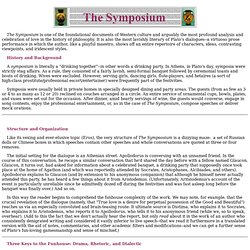
It is also the most lavishly literary of Plato's dialogues--a virtuoso prose performance in which the author, like a playful maestro, shows off an entire repertoire of characters, ideas, contrasting viewpoints, and iridescent styles. History and Background A symposium is literally a "drinking together"--in other words a drinking party. In Athens, in Plato's day, symposia were strictly stag affairs. As a rule, they consisted of a fairly lavish, semi-formal banquet followed by ceremonial toasts and bouts of drinking. Symposia were usually held in private homes in specially designed dining and party areas. Robin Hood - The Facts and the Fiction - Legends, Stories, Songs. IRISH LITERATURE, MYTHOLOGY, FOLKLORE, AND DRAMA.
Irish Writers OnlineIrish PlayographyStudy Ireland: Poetry - BBCIrish Women Writers - M.

OckerbloomIreland Literature GuidePoetry Ireland / Éigse ÉireannEarly Irish Lyric Poetry - Kuno MeyerSonnets from Ireland - E. BlomquistColum's Anthology of Irish Verse - Bartleby.comBREAC - Digital Journal of Irish Studies Medieval Celtic ManuscriptsThe Book of KellsCarmina GadelicaCELT Irish Electronic Texts Irish Writers OnlineIreland Literature ExchangeBibliography of 19th-c.
Irish Literature - J.M. Jonathan SwiftJonathan Swift ArchiveJonathan Swift Biography - IncompetechGulliver's Travels - U. Bram StokerDraculaBram Stoker Biography - Classic Literature LibraryBram Stoker's Dracula - Carstens smith Oscar WildeThe Official Home Page of Oscar WildeWilde Biography - BBCOscar Wilde OnlineCELT: Oscar WildePoetry of Oscar Wilde - Bartleby.com.
Family tree of the Greek gods. Key: The essential Olympians' names are given in bold font.
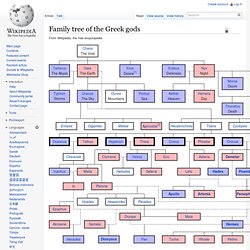
See also List of Greek mythological figures Notes External links. Loch Ness Monster. The Loch Ness Monster is a cryptid, a creature whose existence has been suggested but is not discovered or documented by the scientific community.[3] It is reputedly a large unknown animal that inhabits Loch Ness in the Scottish Highlands.
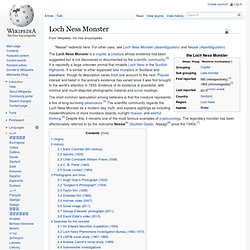
It is similar to other supposed lake monsters in Scotland and elsewhere, though its description varies from one account to the next. Popular interest and belief in the animal's existence has varied since it was first brought to the world's attention in 1933. Evidence of its existence is anecdotal, with minimal and much-disputed photographic material and sonar readings. Origins Loch Ness History. Folktexts: A library of folktales, folklore, fairy tales, and mythology, page 1.
Page 1 edited and/or translated by D.

L. Greek mythology. Greek mythology is explicitly embodied in a large collection of narratives, and implicitly in Greek representational arts, such as vase-paintings and votive gifts.
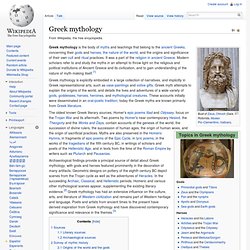
Greek myth attempts to explain the origins of the world, and details the lives and adventures of a wide variety of gods, goddesses, heroes, heroines, and mythological creatures. These accounts initially were disseminated in an oral-poetic tradition; today the Greek myths are known primarily from Greek literature. Sea monster. Sea monsters are sea-dwelling mythical or legendary creatures, often believed to be of immense size. Marine monsters can take many forms, including sea dragons, sea serpents, or multi-armed beasts.
They can be slimy or scaly and are often pictured threatening ships or spouting jets of water. The definition of a "monster" is subjective, and some sea monsters may have been based on scientifically accepted creatures such as whales and types of giant and colossal squid. Sightings and legends[edit] Plate ca. 1544 depicting various sea monsters; compiled from the Carta Marina. Hittite/Hurrian Mythology. The Hurrians occupied the land between the Hittites and Assyria, having descended from the mountains south of the Caspian Sea. They ruled the kingdom of Mitanni. In the late 15th century B.C. the Hittite empire's beginning is marked by an influx of Hurrian names into the royal family.
Tudhalyas I (1420 B.C.) reunited Western Anatolia under Hittite rule, and retook Allepo but lost the Black Sea coast to the Kaska tribes. After some difficulty with the Mittani the Hittites resurged under King Suppilulimas around 1344-1322 taking a firmer hold on Syria. Myths and legends. Chinese mythology. Chinese mythology refers to those myths found in the historical geographic area of China: these include myths in Chinese and other languages, as transmitted by Han Chinese as well as other ethnic groups (of which fifty-six are officially recognized by the current administration of China).[1] Chinese mythology includes creation myths and legends, such as myths concerning the founding of Chinese culture and the Chinese state. As in many cultures' mythologies, Chinese mythology has in the past been believed to be, at least in part, a factual recording of history.
Thus, in the study of historical Chinese culture, many of the stories that have been told regarding characters and events which have been written or told of the distant past have a double tradition: one which presents a more historicized and one which presents a more mythological version.[2] Historians have written evidence of Chinese mythological symbolism from the 12th century BC in the Oracle bone script. Major concepts[edit] Moai. Moai facing inland at Ahu Tongariki, restored by Chilean archaeologist Claudio Cristino in the 1990s Moai. List of mythologies. Aztec mythology. Fairy tale. Roman mythology. John William Waterhouse: Comprehensive Painting Gallery. All mythologies. Mermaid. Grimm Brothers' Home Page.
Compiled by D. L. Ashliman © 1999-2013. Jewish folklore. Middle Ages[edit] Myth, Legend, Folklore, Ghosts. Mythology, folklore, and religion. World Myths and Legends in Art (Minneapolis Institute of Arts) Japanese mythology. Irish mythology. Bunworth Banshee. Native American mythology.